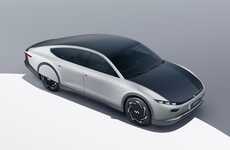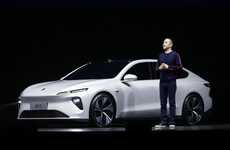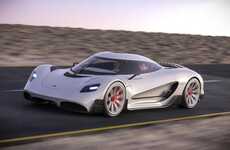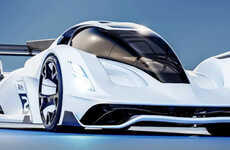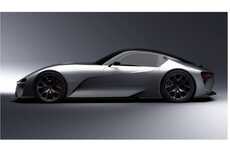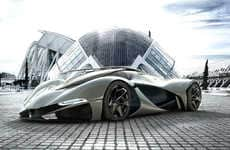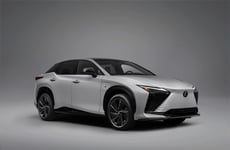
The Quant e-Sportlimousine is Powered by NanoFlowcell Technology
Rahul Kalvapalle — July 21, 2014 — Autos
References: nanoflowcell & gizmag
The Quant e-Sportlimousine is an incredibly futuristic supercar that uses special 'NanoFlowcell' technology that allows it to be powered exclusively by saltwater. The NanoFlowcell electrolyte flow cell power system was developed for NASA and is now finding its way into automotive applications.
The system creates electricity from an electrochemical reaction created by two electrolyte solutions; this electricity is forwarded to the car's super capacitors.
This allows the car to put out zero emissions while also giving it some pretty impressive performance statistics. It will be able to hit a top speed over 350 km/h and accelerate from zero to 100 km/h in only 2.8 seconds. It also boasts a range of more than 600 km.
The car will soon be tested on public roads in Europe before it enters production.
The system creates electricity from an electrochemical reaction created by two electrolyte solutions; this electricity is forwarded to the car's super capacitors.
This allows the car to put out zero emissions while also giving it some pretty impressive performance statistics. It will be able to hit a top speed over 350 km/h and accelerate from zero to 100 km/h in only 2.8 seconds. It also boasts a range of more than 600 km.
The car will soon be tested on public roads in Europe before it enters production.
Trend Themes
1. Saltwater-powered Vehicles - A new trend in automotive industry that utilizes saltwater as a power source to produce zero emissions.
2. Electrolyte Flow Cell Technology - A developing trend in green energy, allowing for energy storage and transportation through electrolytes to provide a sustainable source of power.
3. High-performance Sustainable Vehicles - A trend in the automotive realm aimed at creating sustainable, eco-friendly vehicles that also have high-end performance capabilities.
Industry Implications
1. Automotive - The car industry can utilize electrolyte flow cell technology to create high-performance cars that are sustainable, fuel-efficient, and produce zero emissions.
2. Green Energy - The green energy sector could use electrolyte flow cell technology to create sustainable and renewable energy sources that could power electrical grids,
3. Transportation and Logistics - Transportation and logistics companies could utilize saltwater-powered vehicles with high-performance capabilities to reduce their carbon footprints and improve efficiency.
6
Score
Popularity
Activity
Freshness



